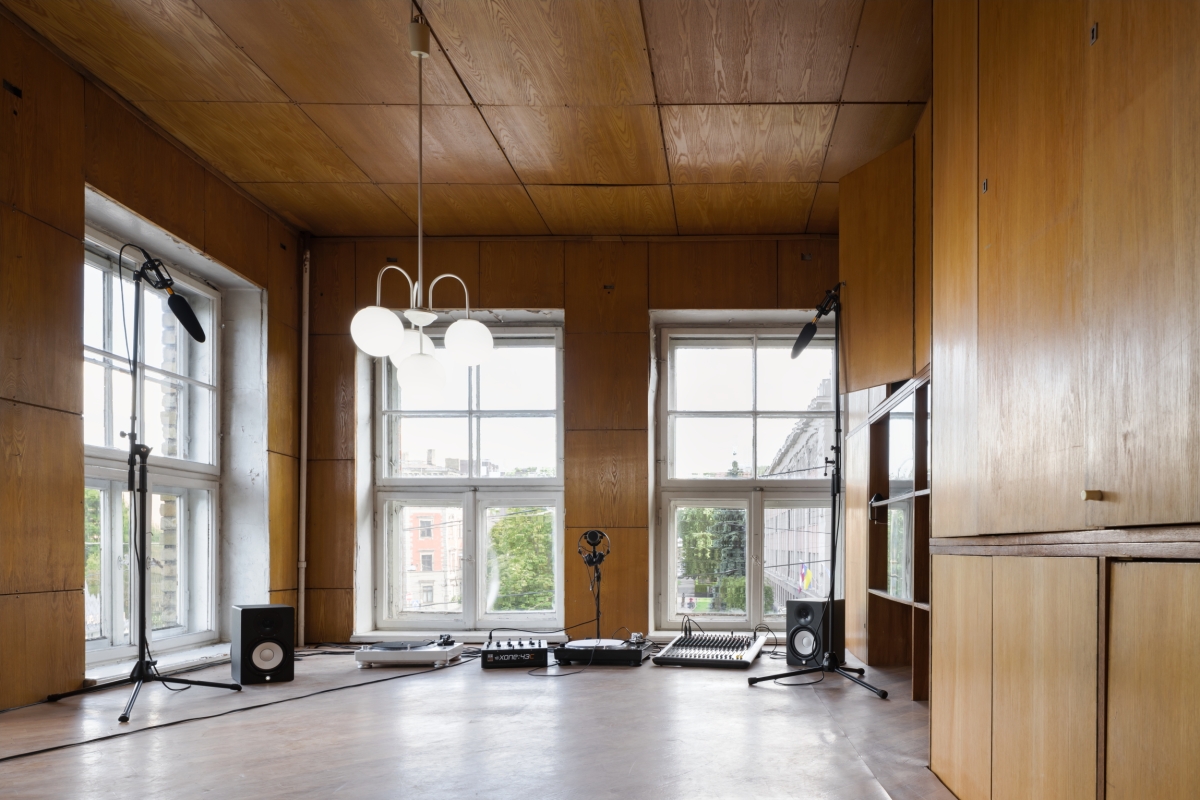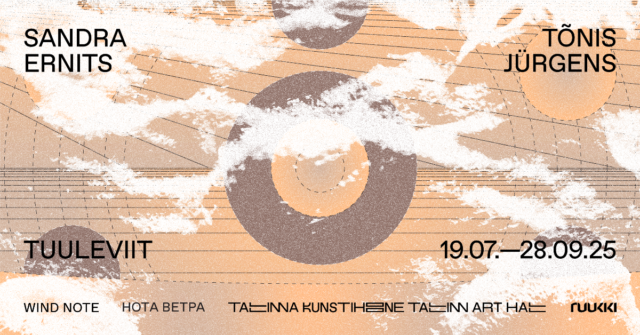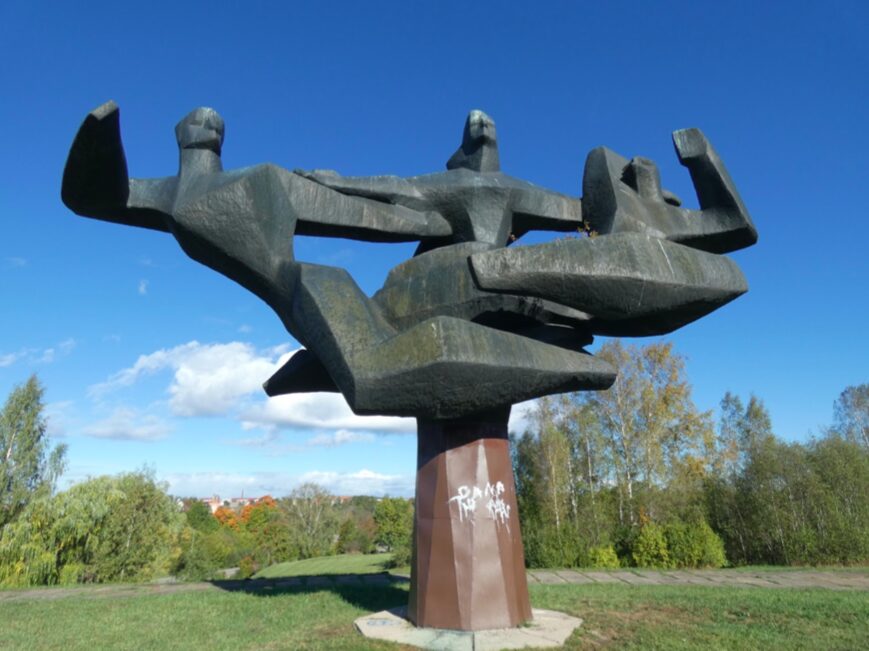The exhibition ‘New Address: EDEN’ runs until August 4 at Kim? Contemporary Art Centre’s future building, Hanzas 22, Riga.
To mark 15 years since its founding, Kim? Contemporary Art Centre announces an annual contemporary art festival in Riga. Since starting its public activities in 2009, Kim? has retained the status of a key platform in the region’s art scene, consistently providing rigorous contributions to contemporary art programming. As it celebrates its anniversary and ponders its future directions, Kim? is expanding its physical and programmatic ambition by presenting its soon-to-be new premises – a historic building awaiting renovation and the adjacent inner courtyard at Hanzas iela 22, marking an exciting step not only for the institution but for Latvia’s art scene and the Baltic art scene in general.
Around the time Kim? opened its doors next to Riga Central Market in its first location in Spīķeri, which was then a creative quarter, the American art historian David Joselit wrote his seminal essay “Institutional Responsibility: The Short Life of Orchard”, devoted to the at that time recently closed artist-run gallery Orchard, from the inception of what was meant to be a three-year project. Although referring to an art unit operating under significantly different circumstances and formation, the author observed the reality of “institutional critique” and the complexities surrounding the existence of, and discussions and decisions within and about art space(s) and art infrastructure at large, which are still no less relevant in the here and now. In the context of EDEN and particularly the question contained in the name of Kim? (which stands for “Kas ir māksla?” – “What is Art?” in Latvian), the significance of this responsibility is directly linked to the hundreds of individuals without whose presence and guidance our “institutional” or “architectonic” contours would not be secure and – in our case, more importantly – would not continue.
Conceptually, EDEN unfolds as an exhibition/site/performance. Soaked in layers of history, the very act of attempting to enter this uninhabitable environment becomes a metaphor for artists-agents examining the mood and reverberations within the present social space. In constructing EDEN, one of the more obvious questions considered had to do with the fear of being expelled from it. But where there is doubt, a new opportunity appears to contest conventional visuality as a norm in producing an effect.
In dialogue with the participating artists, the thematic arc of EDEN is marked by a turn to the illusory tools of self-representation, reflections on contemporary society in its manifold manifestations, ruling ideologies, and public and private space. It unfolds via a sensory experience brought out by the merging of two earlier installations – Bed-Room-Bed and Impulse – inspired by the streets surrounding the venue (Evita Vasiļjeva), a performative Cabinet of Eden which receives and transmits radio signals (Tīrkultūra), a premiere of a video work documenting four protagonists engaged in interdependent, movement-based choreography (Viktor Timofeev), an audiovisual installation as a transposition of humanity’s early architectonic forms, oscillating between primal beginnings and a constantly re-emerging digital ecosphere and its auditory memories (Jonas Wendelin, Evita Manji), a large-format silent vanitas of contemporary society placed within the interior of the building (Santa France), a site-specific set of sculptural units that stems from an interest in optimising subordination to all and resulting in an inwardly growing complexity (Jānis Dzirnieks), a meticulously constructed computer animation that follows the restless activities of a not-quite-human protagonist and reflects on the illusions of image-making, society, ideology and its own “self” (Sanya Kantarovsky), a “ghostly” spatial arrangement reflecting on positive-negative spaces (Agate Tūna), a site-specific installation emphasising encounters with exhibition visitors’ frail memory and carefully sought out ambiguities and dailiness (Laura Kaminskaitė), a fragile witness to a protracted regional conflict expressing harsh sentiment (Nikita Kadan), and a rhythmic account of the spiritual implications of colonial plunder, fused with earth, sky, sea, myth and place (Sky Hopinka), as well as a constellation of deeply intimate collective energy and objects produced prior to and during the opening performance (YBDG); meanwhile a more traditional medium – small-format painting – is contributed by an artist (Kaspars Groševs) with his ongoing series about an old man who walked and walked and has by now already returned home, to EDEN. The exhibition experience is also complemented by a scale model of the forthcoming renovated site designed by the architecture office Vilnis Mičulis, which can be found by taking a walk through the exhibition space.
The title New Address: EDEN is a literary and imagined construction, which, from one side, indicates the life-cycle of an art institution changing addresses due to gentrification and other external considerations, perfecting, questioning and advancing itself in the process. At the same time, the name also includes a self-reference to a Kim? happening which took place back in 2010, when a group of artists and stage designers Kaspars Groševs, MAREUNROL’S, Rudolf Bekic used an abandoned, roofless warehouse overgrown with trees and bushes to set up EDEN, an improvised hotel that was easy to enter, but challenging to move around and visitors quickly sought the exit. A decade and some years and a half have gone by and we are back to this mantra, returning to it with a renewed sense of excitement and purpose.
Participants: Jānis Dzirnieks (LV), Santa France (LV), Kaspars Groševs (LV), Sky Hopinka (USA), Laura Kaminskaitė (LT), Sanya Kantarovsky (USA), Nikita Kadan (UA), Viktors Timofejevs (USA/LV), Tīrkultūra group (Rolands Pēterkops, Emīls Jansons, habibah akila jamila, Reinis Semēvics, Michael Holland, LV), Agate Tūna (LV), Evita Vasiļjeva (LV/FR), Jonas Wendelin (DE) and Evita Manji (GR), Young Boy Dancing Group (YBDG).
Curated by Evita Goze, Žanete Liekīte, Zane Onckule
Photo: Ansis Starks, Jonas Wendelin, Ģirts Raģelis.
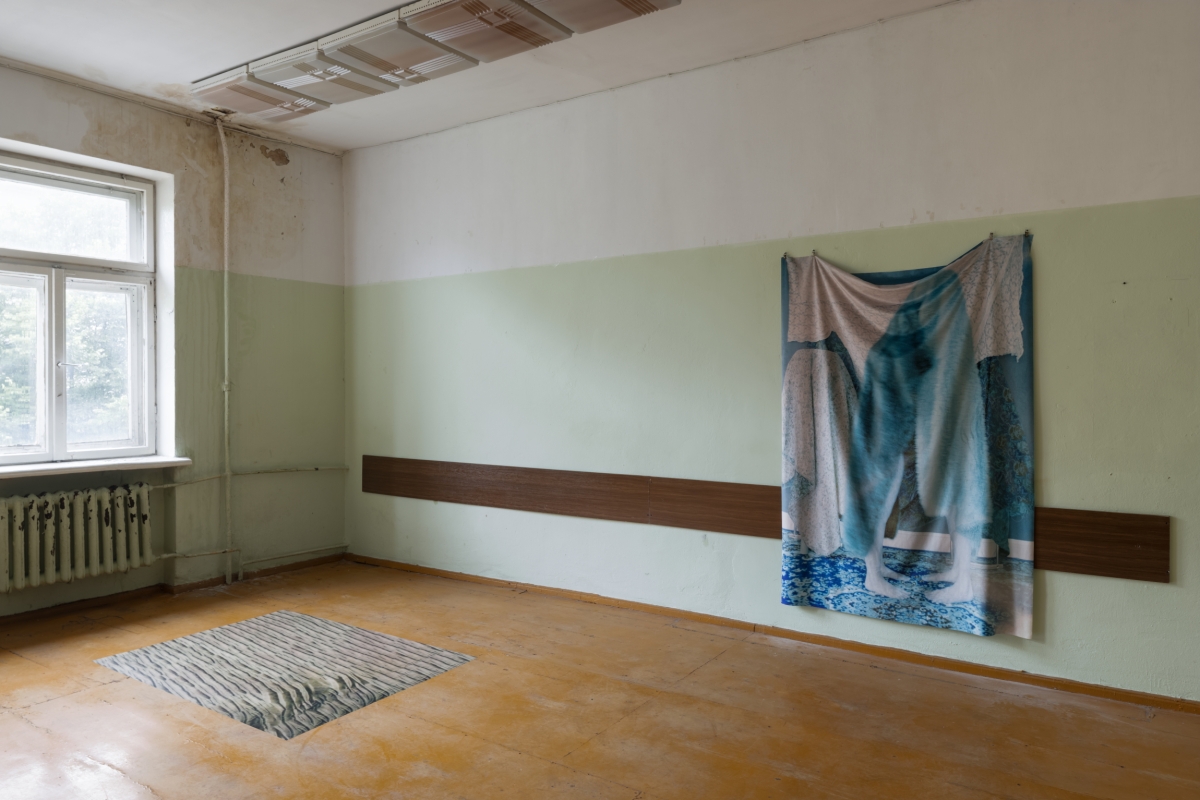
Agate Tūna, Non-Place Perspectives, 2024.
Display in variations right to left amongst a combination of analogue and digital photographic techniques. Photo: Ansis Starks.
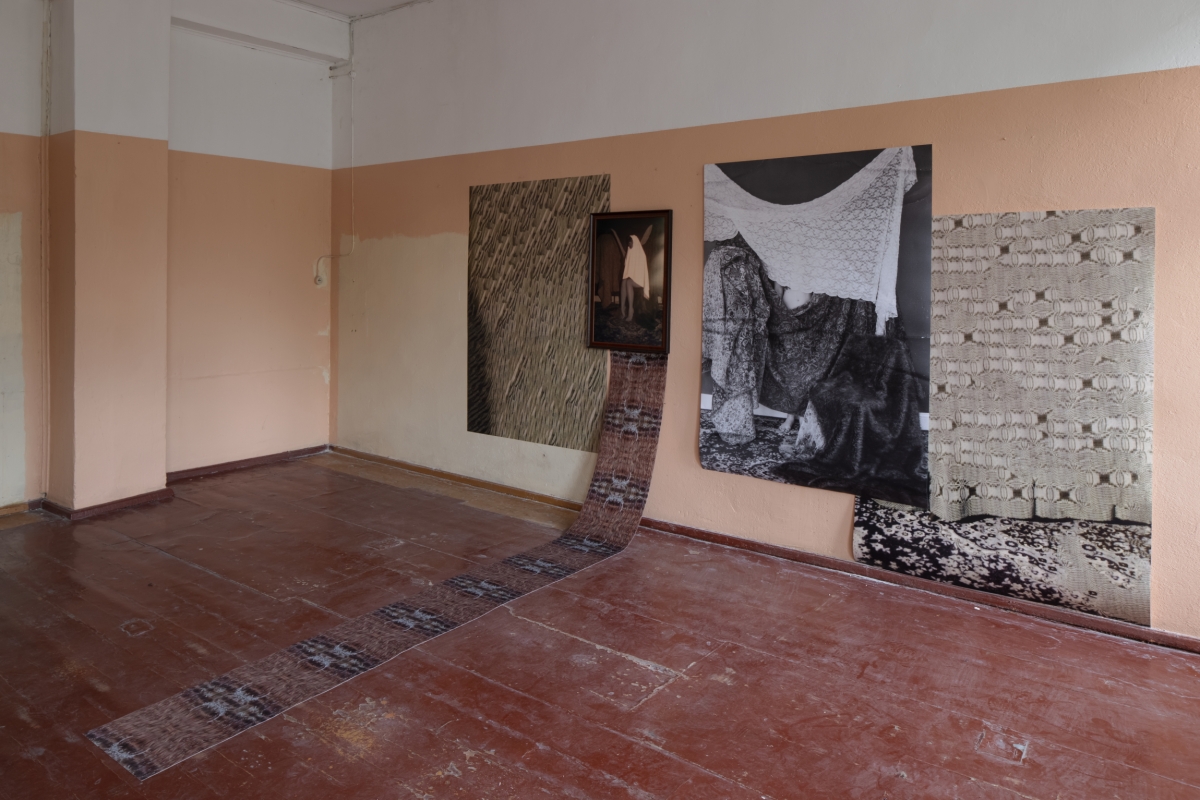
Agate Tūna, Non-Place Perspectives, 2024.
Display in variations right to left amongst a combination of analogue and digital photographic techniques. Photo: Ansis Starks.
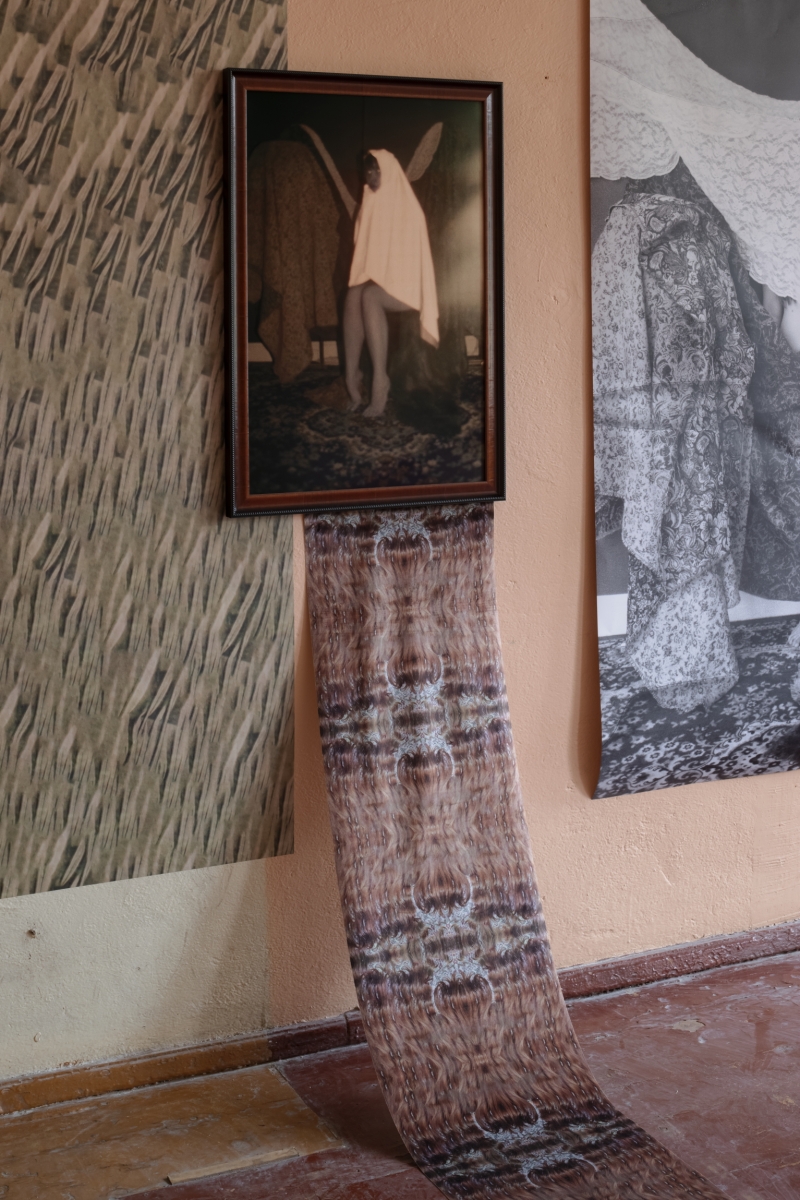
Agate Tūna, Non-Place Perspectives, 2024.
Display in variations right to left amongst a combination of analogue and digital photographic techniques. Photo: Ansis Starks.

Evita Vasiljeva, Near 555 Nanometers, 2024
Site-specific installation (multi-channel sound, lights, drawing and sculpture installation). Photo: Ansis Starks.

Evita Vasiljeva, Near 555 Nanometers, 2024
Site-specific installation (multi-channel sound, lights, drawing and sculpture installation). Photo: Ansis Starks.
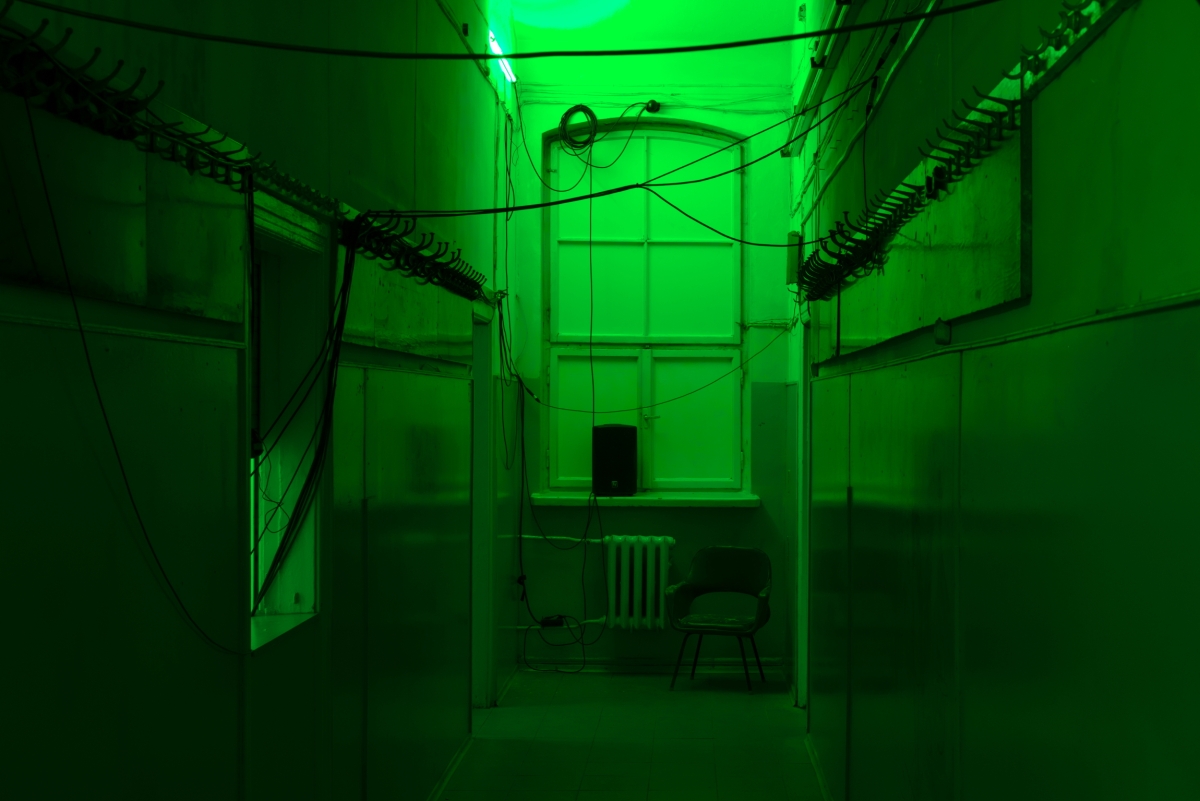
Evita Vasiljeva, Near 555 Nanometers, 2024
Site-specific installation (multi-channel sound, lights, drawing and sculpture installation). Photo: Ansis Starks.
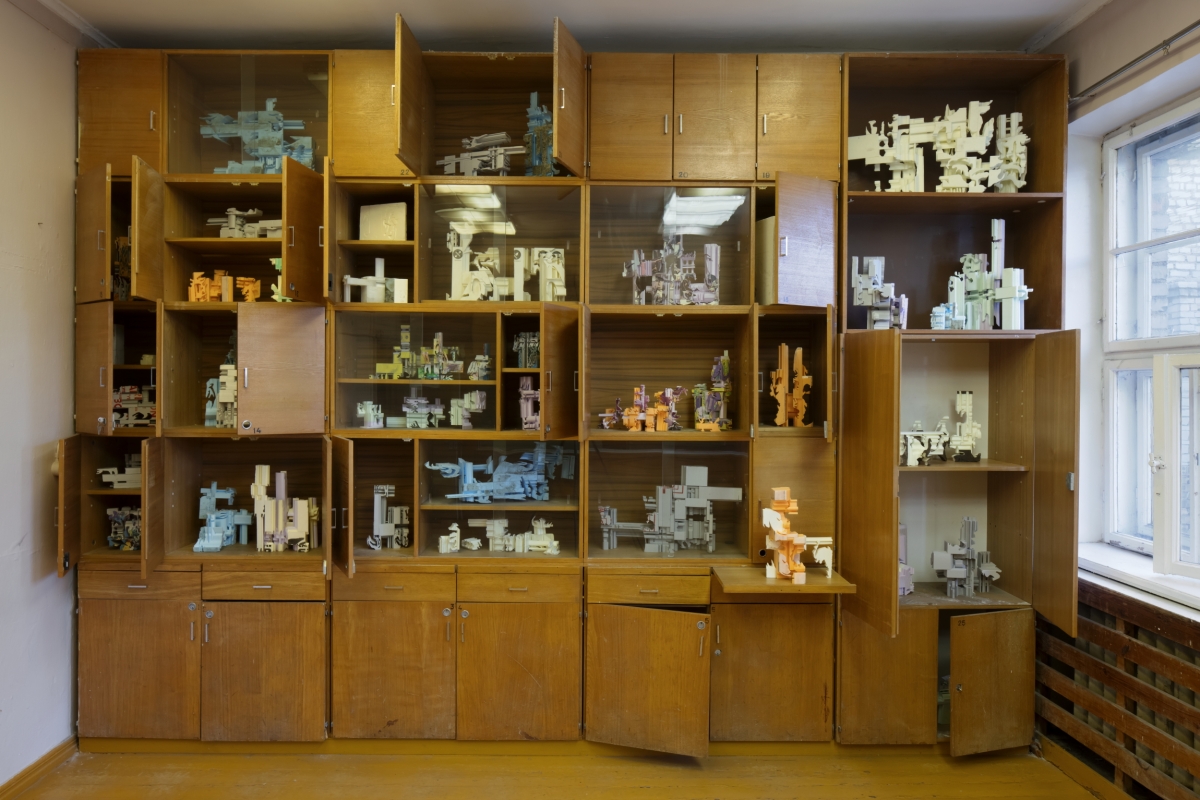
Jānis Dzirnieks, Fracture Stimulation for Short-Lasting Joy (ongoing), 2024
Extruded foam, dimensions variable. Photo: Ansis Starks.
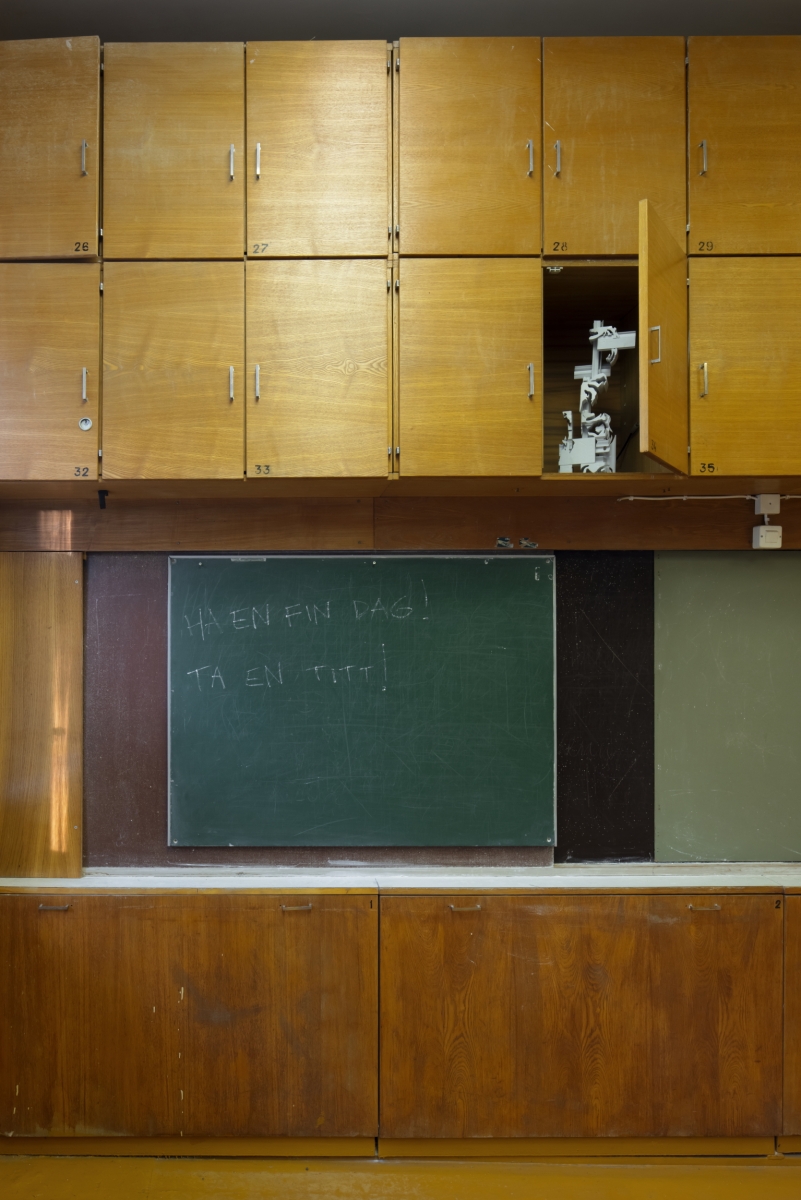
Jānis Dzirnieks, Fracture Stimulation for Short-Lasting Joy (ongoing), 2024
Extruded foam, dimensions variable. Photo: Ansis Starks.
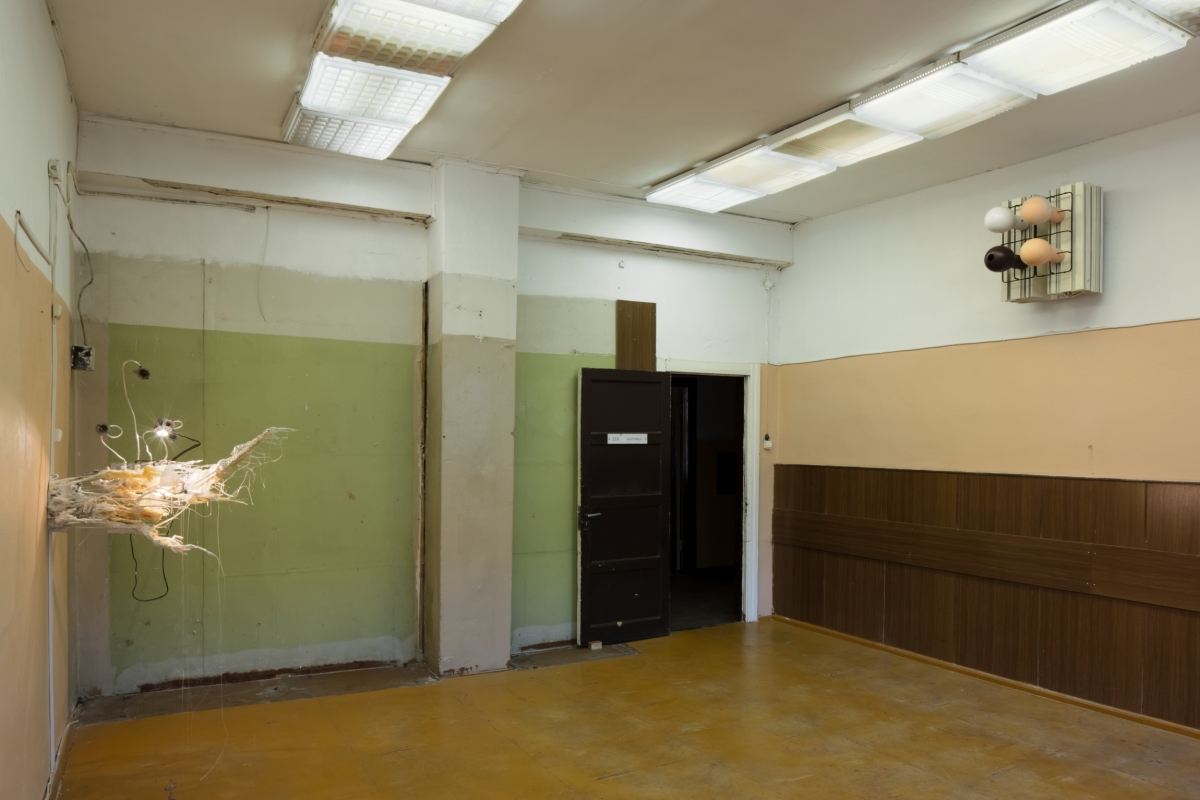
Jānis Dzirnieks. Untitled, 2024. Found lamp, PETG, polyurethane resin, dimensions variable. Photo: Ansis Starks.
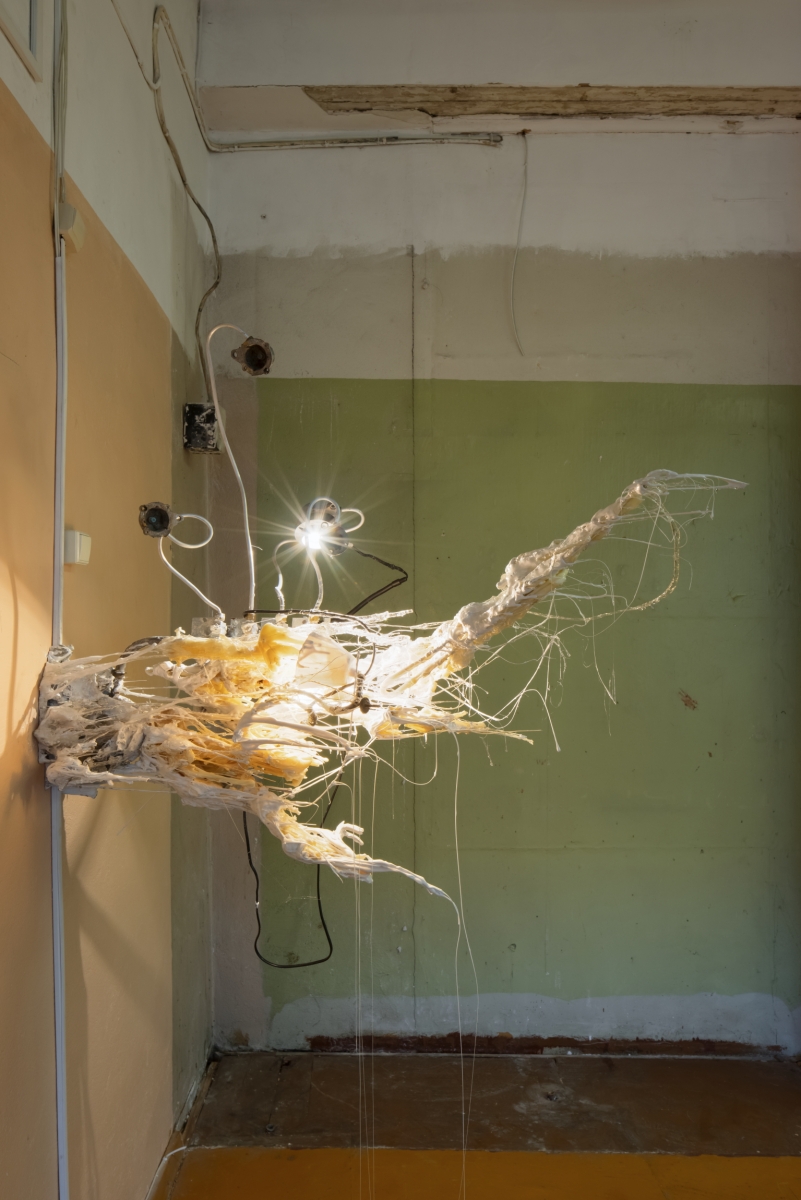
Jānis Dzirnieks, Conservation of Energy For Greater Access of Milking, 2022–2024
Gas stove, PLA filament, acrylic putty, epoxy resin, fibreglass, spray paint, found
luminous wall sticker, found cut-out paper hat, colophonium, neodymium magnets, steel,
51x62x49 cm. Photo: Ansis Starks.

Jonas Wendelin and Evita Manji. Dual Presence, 2024. Audio-visual installation. Ceramic sculptures, steel, beacon lights, cabling, light sensors, active speakers. Jonas Wendelin with a musical composition by Evita Manji. Photo: Ansis Starks.
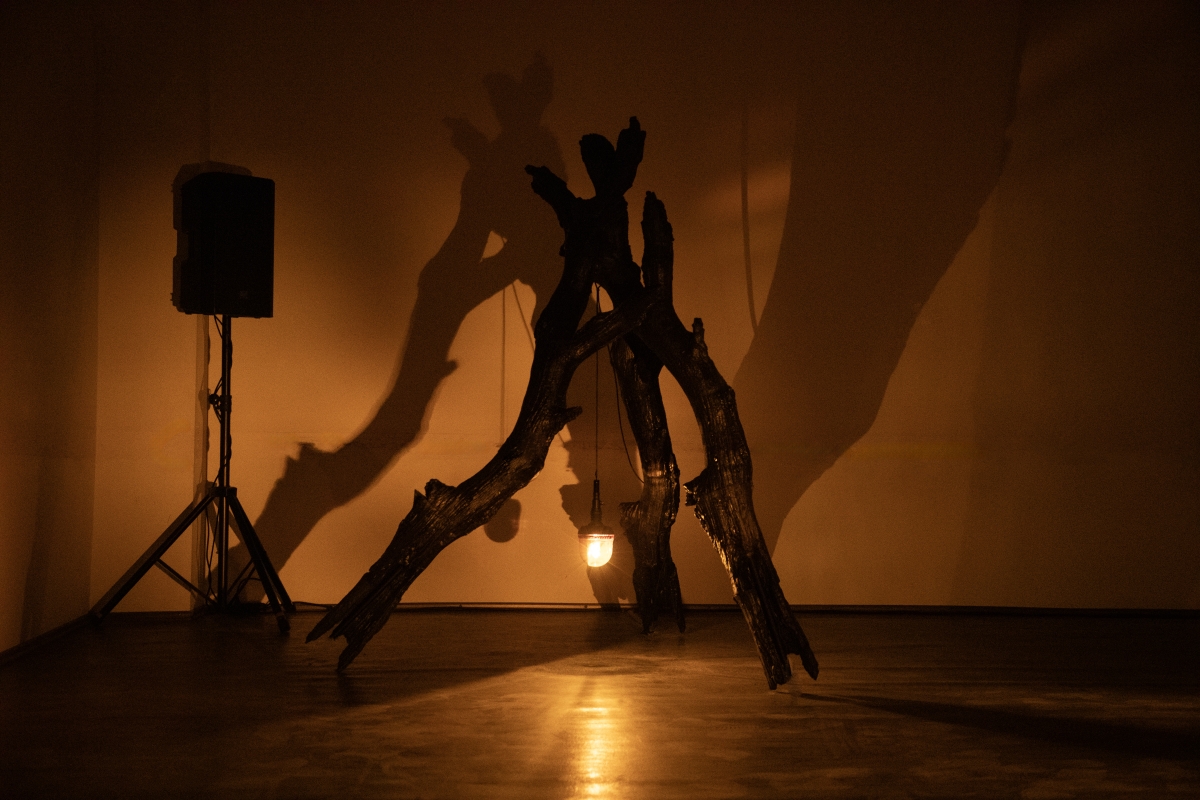
Jonas Wendelin and Evita Manji. Dual Presence, 2024. Audio-visual installation. Ceramic sculptures, steel, beacon lights, cabling, light sensors, active speakers. Jonas Wendelin with a musical composition by Evita Manji. Photo: Jonas Wendelin.

Jonas Wendelin and Evita Manji. Dual Presence, 2024. Audio-visual installation. Ceramic sculptures, steel, beacon lights, cabling, light sensors, active speakers. Jonas Wendelin with a musical composition by Evita Manji. Photo: Jonas Wendelin.
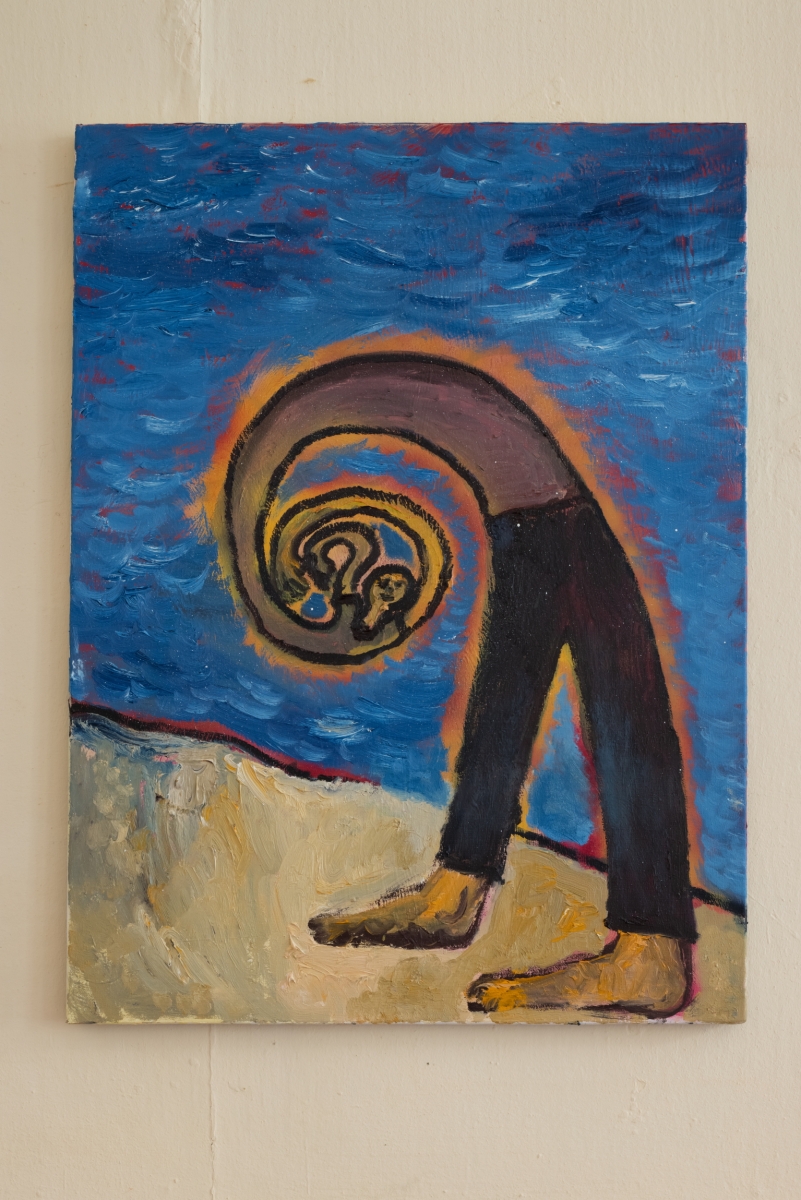
Kaspars Groševs, Untilted, 2024
Acrylic and oil on canvas, various dimensions. Photo: Ansis Starks.
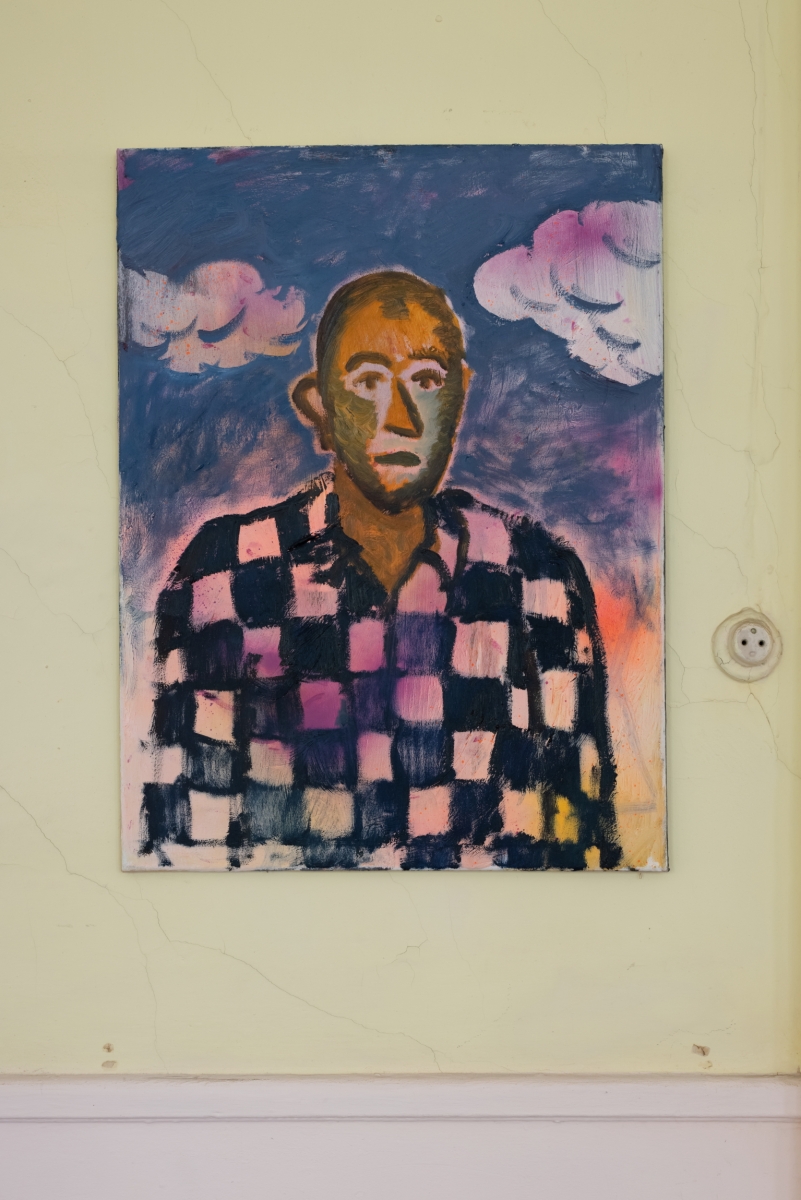
Kaspars Groševs, Untilted, 2024
Acrylic and oil on canvas, various dimensions. Photo: Ansis Starks.
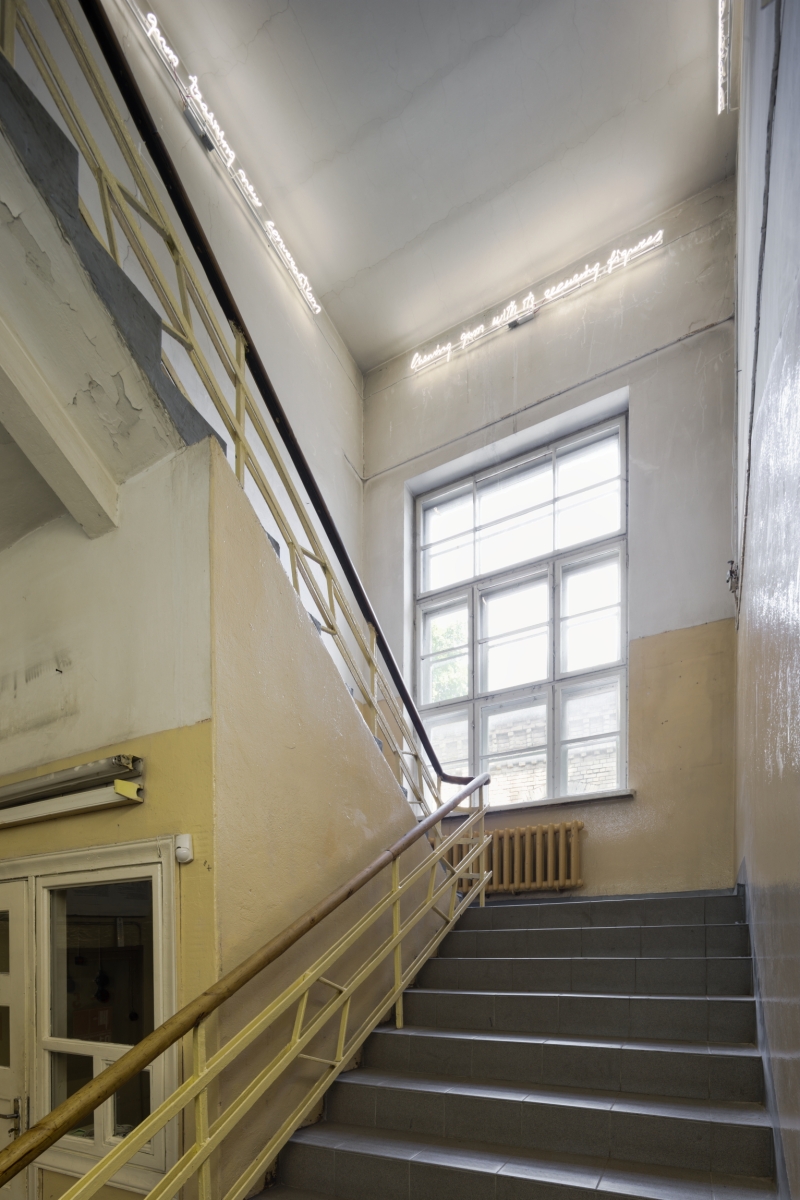
Laura Kaminskaitė, Chewing gum, 2024
Neon tubing, 24 x 860 cm. Photo: Ansis Starks
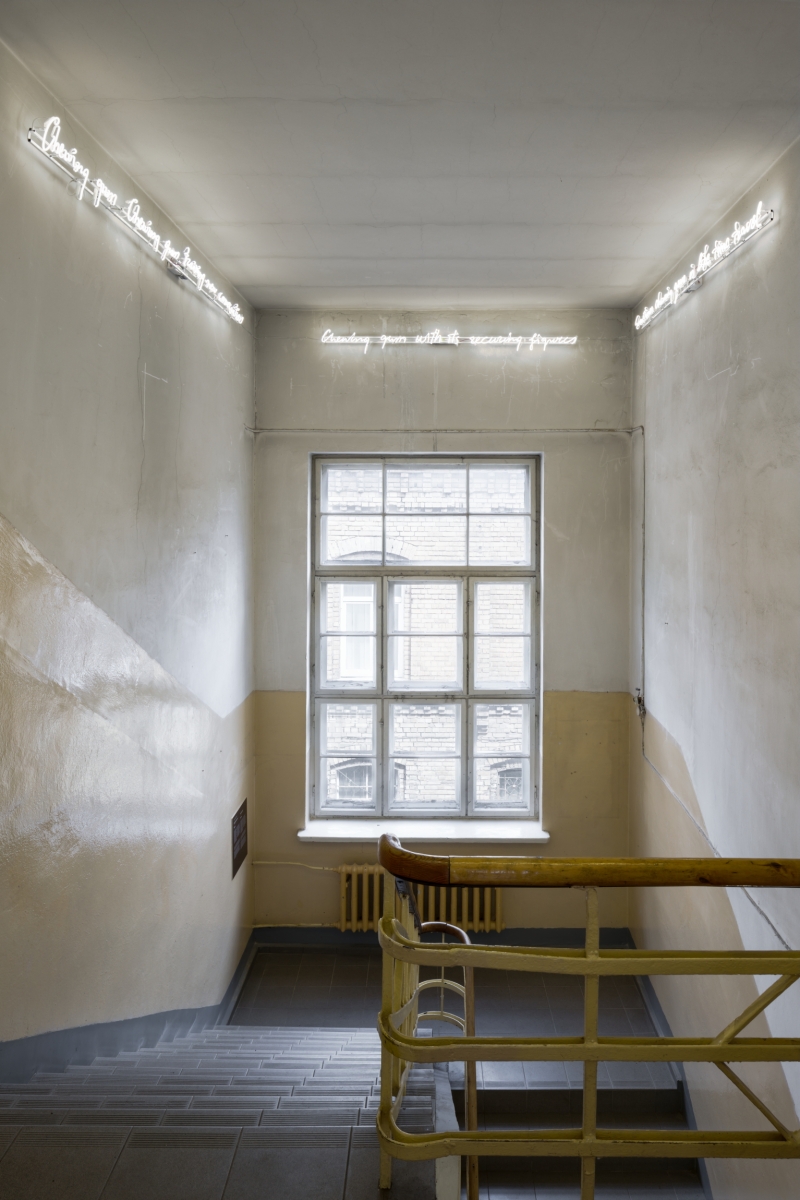
Laura Kaminskaitė, Chewing gum, 2024
Neon tubing, 24 x 860 cm. Photo: Ansis Starks

Laura Kaminskaitė, Chewing gum, 2024
Neon tubing, 24 x 860 cm. Photo: Ansis Starks
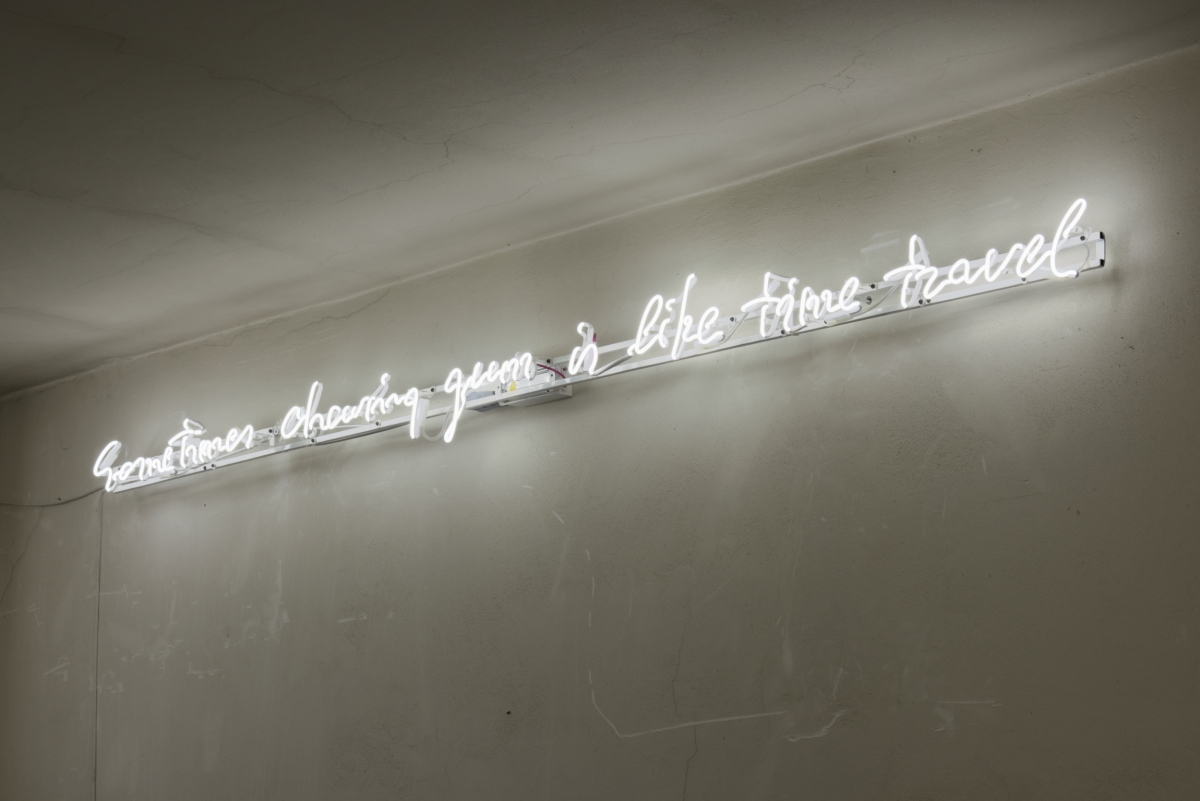
Laura Kaminskaitė, Chewing gum, 2024
Neon tubing, 24 x 860 cm. Photo: Ansis Starks

Laura Kaminskaitė, Chewing gum, 2024
Neon tubing, 24 x 860 cm. Photo: Ansis Starks

Nikita Kadan, Protection of Plants, 2014
Paper, collage, 41,7 x 29,6 cm. Photo: Ansis Starks.

Nikita Kadan, Protection of Plants, 2014
Paper, collage, 41,7 x 29,6 cm. Photo: Ansis Starks.

Nikita Kadan, Protection of Plants, 2014
Paper, collage, 41,7 x 29,6 cm. Photo: Ansis Starks.

Nikita Kadan, Protection of Plants, 2014
Paper, collage, 41,7 x 29,6 cm. Photo: Ansis Starks.
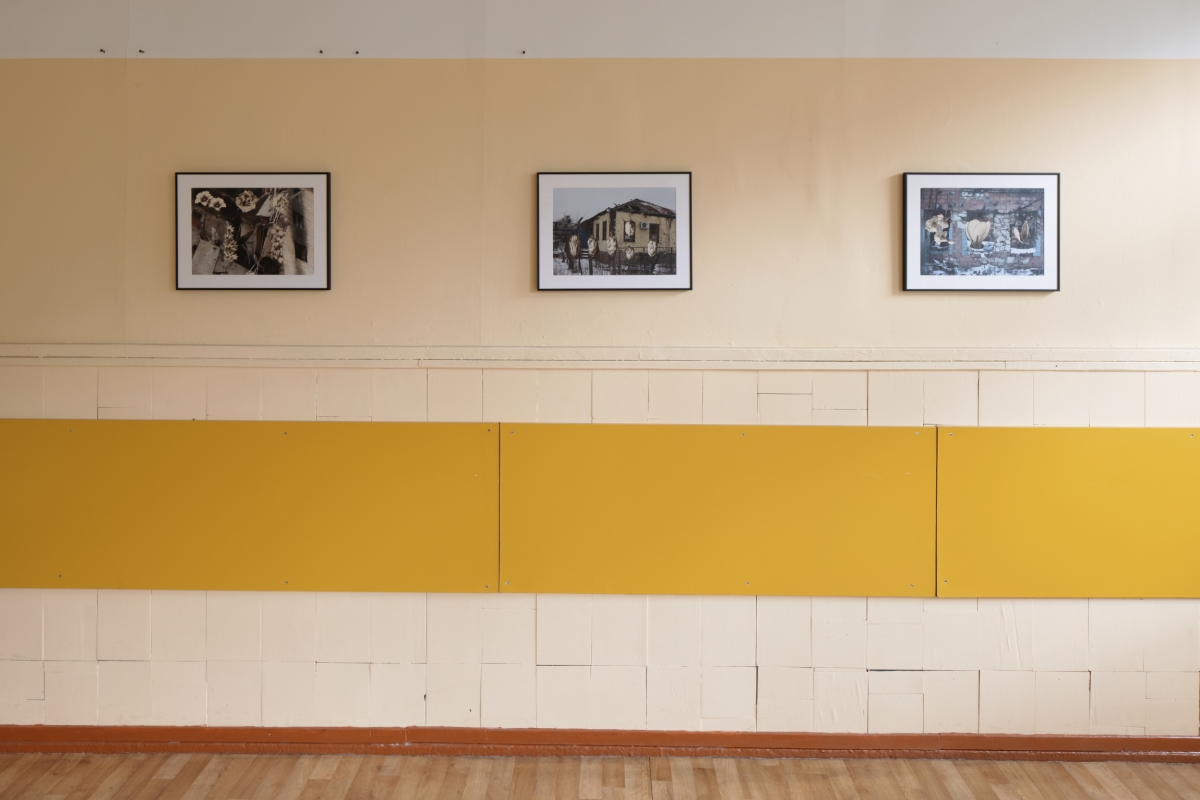
Nikita Kadan, Protection of Plants, 2014
Paper, collage, 41,7 x 29,6 cm. Photo: Ansis Starks.

Santa France,
Firstly, Prepare the Surface
Step Two: Gently Peel the Layers
Separate the Yolk, 2024
3D illustration, digital print on dibond, 3D animation loop, hologram projector, 200 x 133 cm. Photo: Ansis Starks

Santa France,
Firstly, Prepare the Surface
Step Two: Gently Peel the Layers
Separate the Yolk, 2024
3D illustration, digital print on dibond, 3D animation loop, hologram projector, 200 x 133 cm. Photo: Ansis Starks

Santa France,
Firstly, Prepare the Surface
Step Two: Gently Peel the Layers
Separate the Yolk, 2024
3D illustration, digital print on dibond, 3D animation loop, hologram projector, 200 x 133 cm. Photo: Ansis Starks
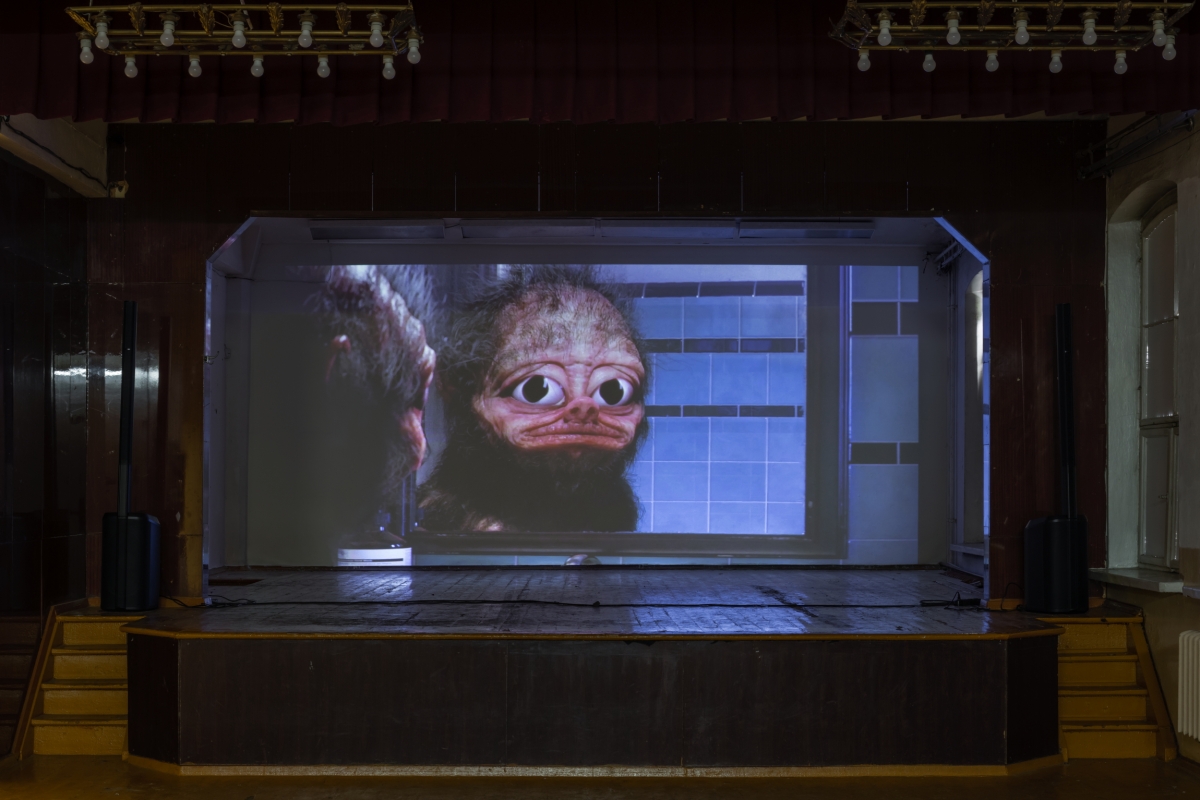
Sanya Kantarovsky. A Solid House, 2022. Video, 12:21 min. Photo: Ansis Starks.

Sky Hopinka, Mnemonics of Shape and Reason, 2021
HD video, stereo, colour, 04:13 min. Photo: Ansis Starks.

Viktor Timofeev. Alice, Bob, Carol and David, 2024
HD Video, colour, sound, 20:30 min. Photo: Ansis Starks.
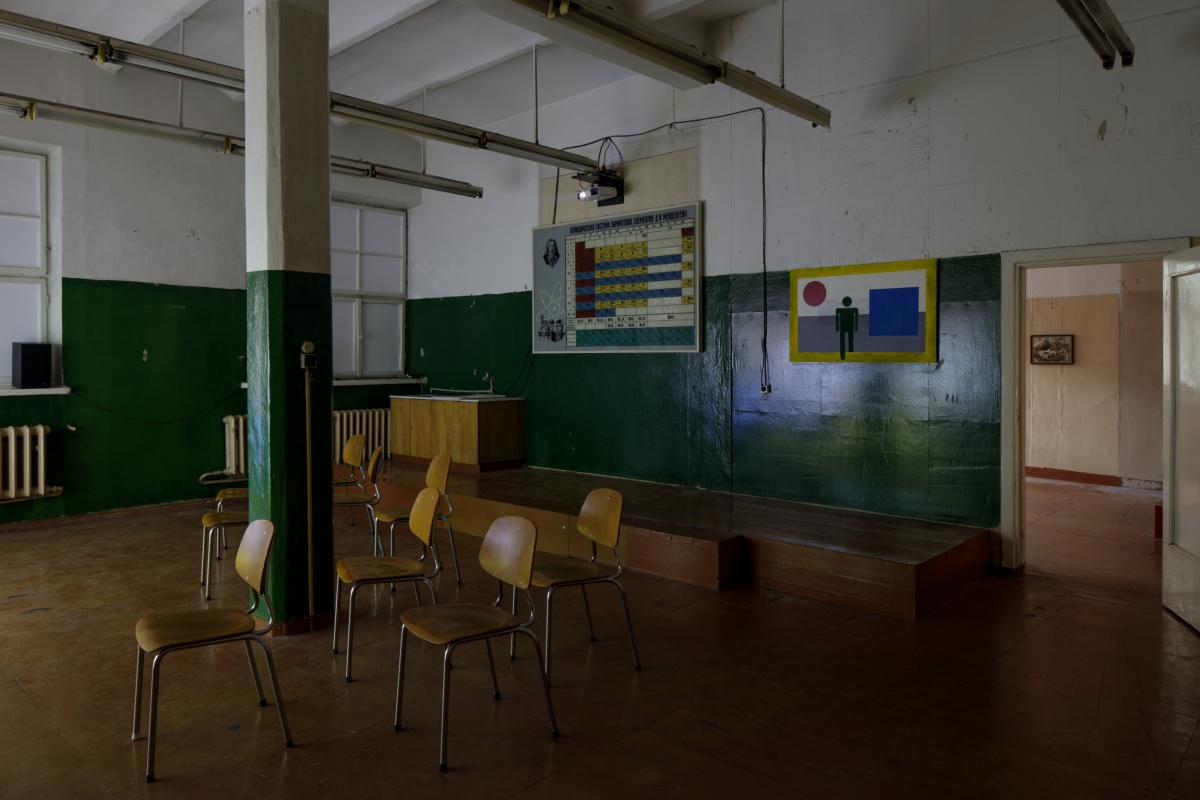
Viktor Timofeev. Alice, Bob, Carol and David, 2024
HD Video, colour, sound, 20:30 min. Photo: Ansis Starks.
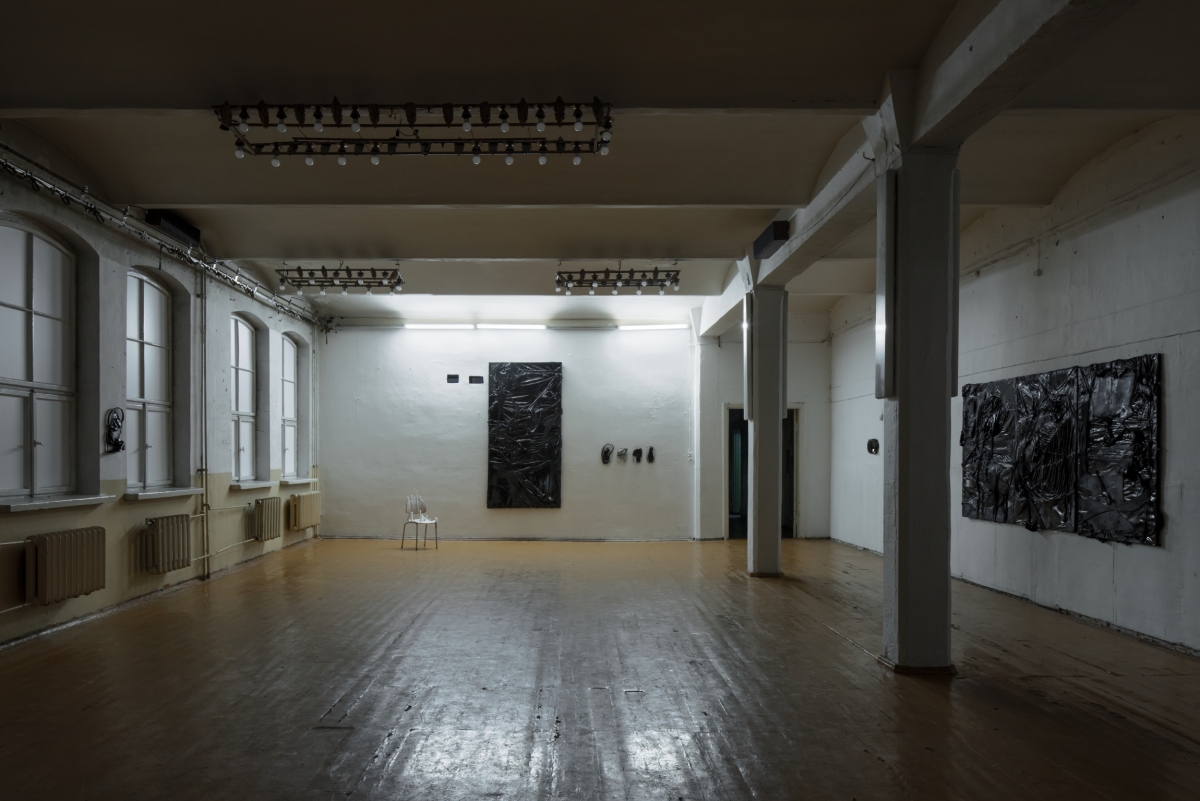
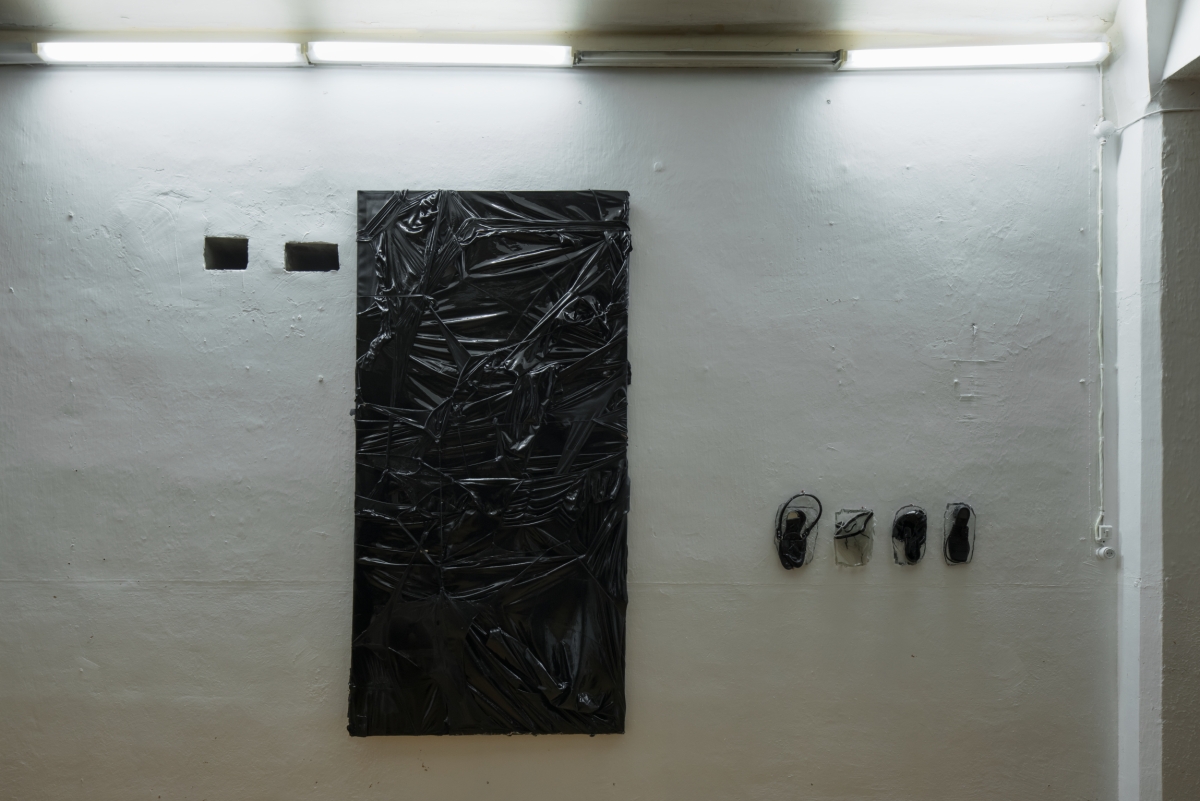
YBDG, 2024
Textiles, shoes, bags, epoxy, various dimensions. Photo: Ansis Starks

YBDG, 2024
Textiles, shoes, bags, epoxy, various dimensions. Photo: Ansis Starks
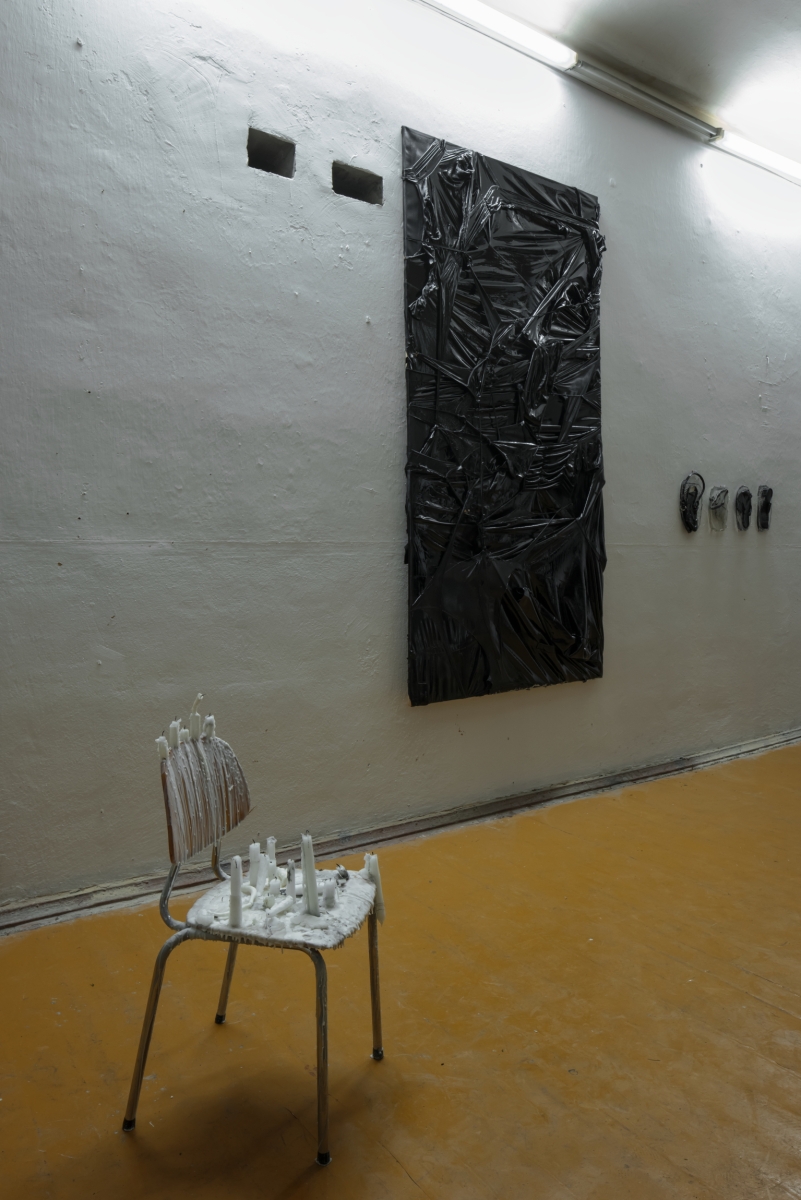
YBDG, 2024
Textiles, shoes, bags, epoxy, various dimensions. Photo: Ansis Starks
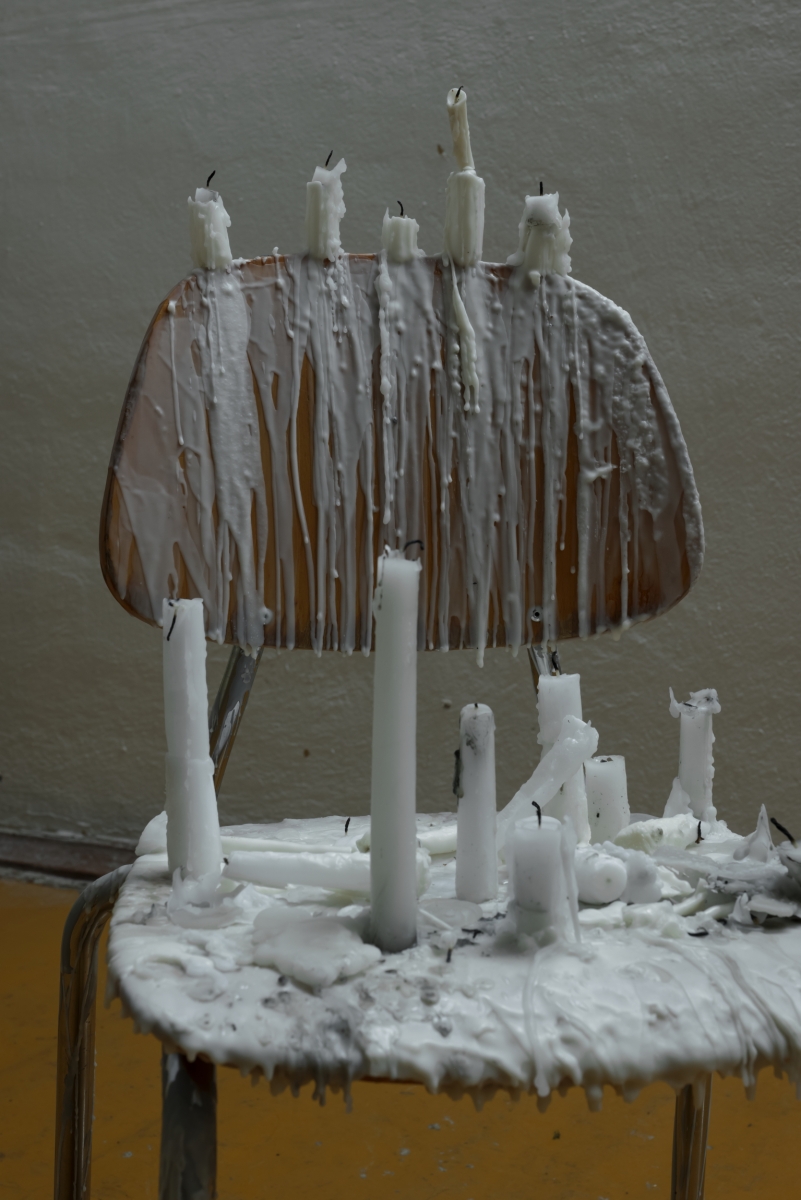
YBDG, 2024
Textiles, shoes, bags, epoxy, various dimensions. Photo: Ansis Starks

Performance by Young Boy Dancing Group, 2024. Photo: Ģirts Raģelis.

Performance by Young Boy Dancing Group, 2024. Photo: Ģirts Raģelis.
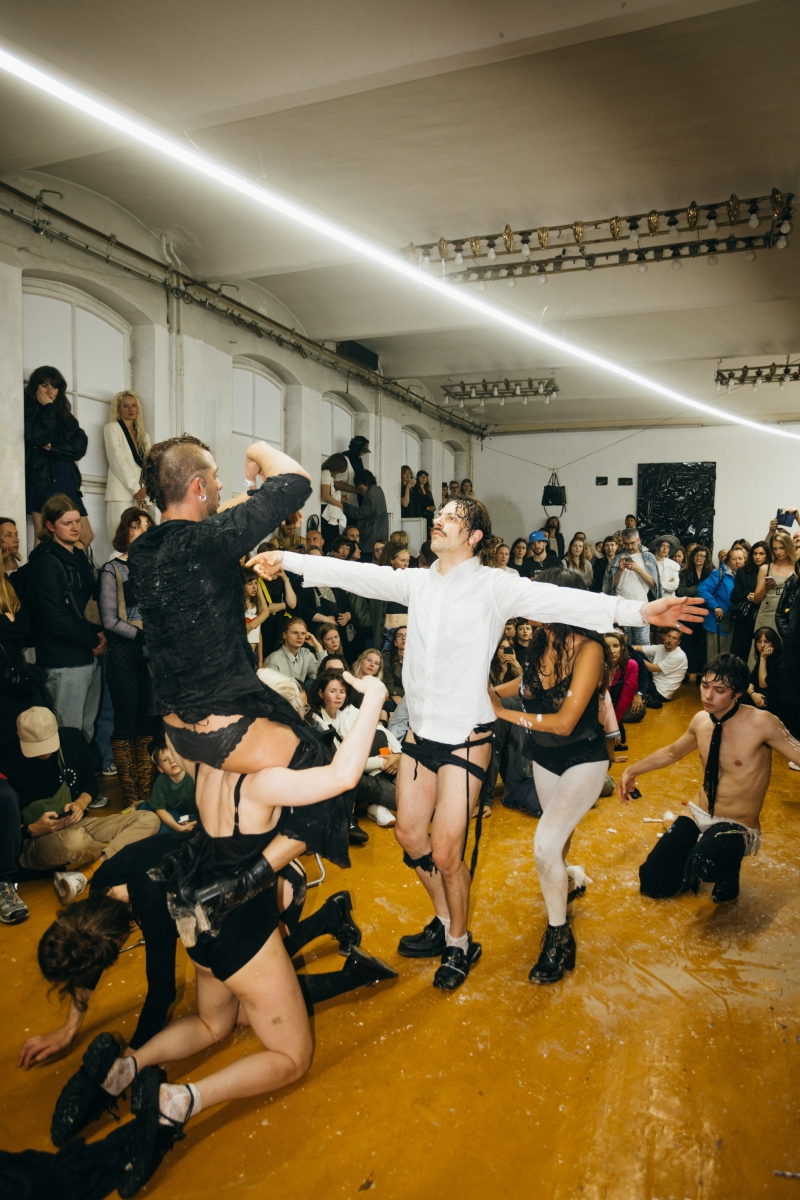
Performance by Young Boy Dancing Group, 2024. Photo: Ģirts Raģelis.
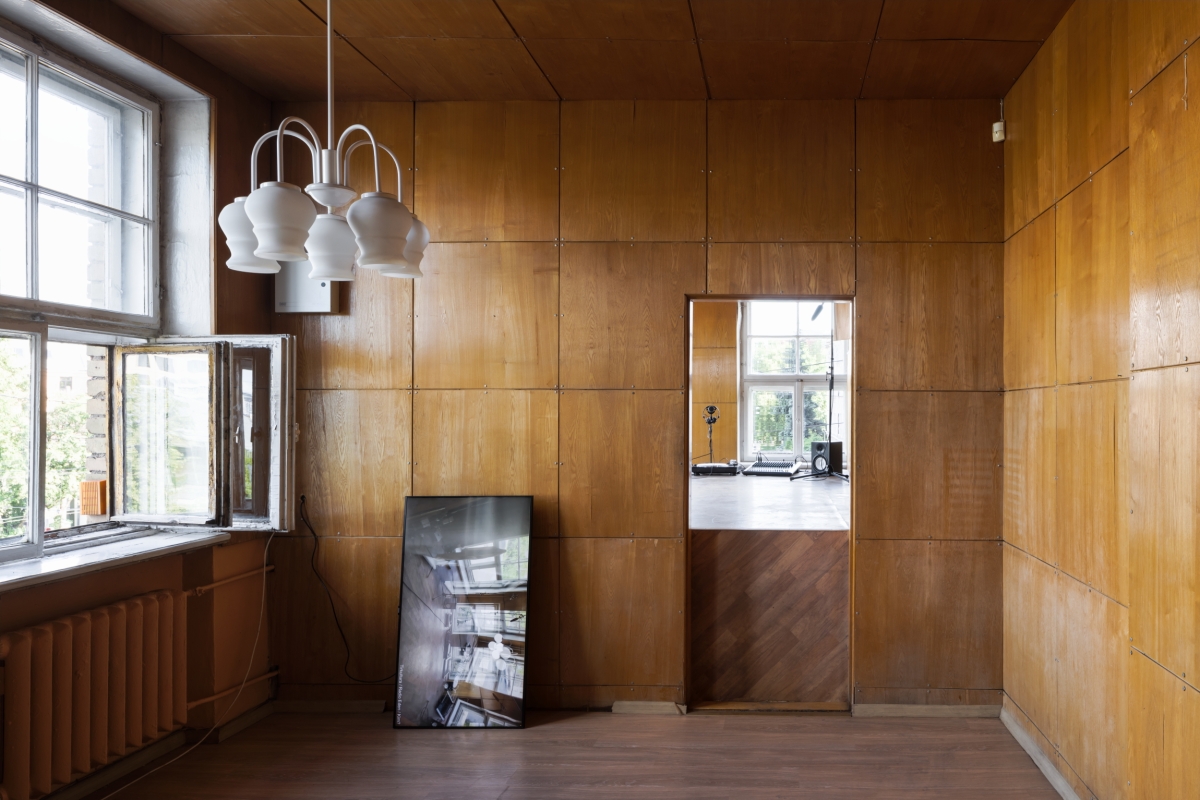
TĪRKULTŪRA (Rolands Pēterkops, Emīls Jansons, habibah akila jamila,
Reinis Sem
ēvics, Maikls Holands / Michael Holland),
Radio Eden studio, 2024
Radio audio installation. Photo: Ansis Starks
